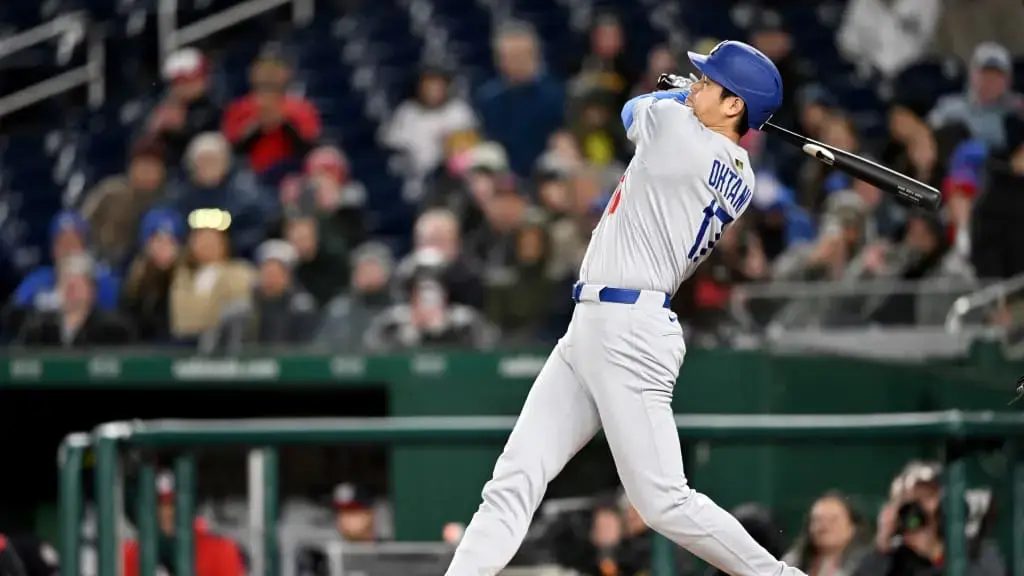Just minutes after the intense Game 7 victory against the Blue Jays, tensions erupted on the field. Fans were still cheering when a heated confrontation unfolded that would dominate headlines for days. Emotions ran high, and the stadium buzzed with anticipation, sensing that something extraordinary had just begun.

Blue Jays Head Coach John Schneider stormed toward the media, visibly frustrated. His voice trembled with anger as he pointed directly at Shohei Ohtani, accusing the star player of cheating. Schneider demanded an immediate investigation by MLB, claiming that technology had unfairly influenced the outcome of the crucial home run.

Shohei Ohtani remained calm, unshaken by the accusations thrown his way. He adjusted his cap, his eyes fixed on the field as the crowd’s roar intensified. Millions of fans watched on social media, sharing the controversy in real time, igniting a wave of online discussions and fiery debates across platforms.

The home run in question had knocked out Vladimir Guerrero Jr., a moment that would be replayed endlessly on sports networks. Analysts debated the mechanics of the swing, the trajectory of the ball, and the possibility of high-tech devices, weighing evidence and fueling speculation about one of baseball’s most talked-about events.
While some experts sided with Schneider, emphasizing fair play, others defended Ohtani, praising his skill, discipline, and focus. They argued that the allegations were unfounded, highlighting years of consistent performance. The split opinions created tension not only within the league but also among passionate fans worldwide.
Ohtani’s next move would define the narrative. Ten minutes after the accusations, he lifted his head, displaying an unmistakable confidence. The stadium fell into silence, sensing the gravity of the moment. Every camera and phone captured his every gesture, as if the world collectively held its breath to witness what would come next.
Then came the moment that stunned everyone. Ohtani gave a defiant smile and spoke twelve words that would echo throughout the sports world. His calm, almost chilling tone left John Schneider speechless. Reporters scrambled for notes, while fans erupted, celebrating the athlete’s unwavering composure under pressure.
The twelve words were dissected by analysts, commentators, and social media influencers. Every syllable was scrutinized for meaning, implication, and hidden messages. The crowd replayed the moment in real time, sharing clips and reactions online, contributing to an unprecedented viral wave surrounding the controversy.
MLB released a statement hours later, acknowledging the claims but confirming that no immediate action would be taken. Investigators promised a review of the evidence, though the league emphasized respect for Ohtani’s privacy and the importance of maintaining integrity throughout the process.
Meanwhile, the media frenzy intensified. Television networks interrupted regular programming to cover the drama, sports podcasts discussed the possible outcomes, and fan communities debated endlessly. Every angle, from technical details to emotional impact, became fodder for analysis, speculation, and heated arguments.
Social media exploded with memes, fan art, and commentary. Hashtags related to Ohtani and Schneider trended globally, engaging millions of users. Some fans defended Ohtani passionately, while others sided with Schneider’s call for accountability. The debate transcended sports, touching on ethics, fairness, and the role of technology in modern athletics.
Back on the field, Ohtani prepared for post-game interviews with remarkable composure. Cameras followed him closely, capturing subtle facial expressions and body language. Despite the uproar, he remained professional, answering questions with precision and poise, reinforcing his reputation as one of baseball’s most focused and disciplined athletes.
Analysts compared this incident to historical controversies in baseball, recalling legendary disputes and heated rivalries. Many noted the emotional intensity of Game 7, emphasizing how pressure can amplify conflicts. This comparison added layers of narrative, connecting modern drama to the sport’s storied past.
John Schneider, meanwhile, faced scrutiny for his public reaction. Some praised his passion, while others criticized him for appearing impulsive. His credibility became a talking point, with sports commentators dissecting his tone, choice of words, and potential impact on team morale in the aftermath of the incident.
Ohtani’s response inspired discussions beyond baseball. Psychologists and leadership experts analyzed his behavior, noting resilience, emotional control, and the ability to perform under pressure. They highlighted lessons in focus and strategic thinking, using his response as a case study for managing public criticism effectively.
The incident also affected the Blue Jays organization. Management reviewed the controversy internally, evaluating coaching strategies and communication with players. Team morale and cohesion were top priorities, as they sought to prevent the situation from escalating and to maintain focus on upcoming games and season goals.
Fans continued debating long after the game ended. Sports forums, comment sections, and livestream chats buzzed with opinion and speculation. Some argued that Ohtani’s twelve words were a psychological masterstroke, while others suggested they masked guilt or defiance, fueling the ongoing conversation.
Merchandise sales related to Ohtani surged, with jerseys, caps, and memorabilia flying off shelves. The controversy inadvertently boosted engagement with the sport, drawing attention from casual viewers and dedicated fans alike. Social media engagement metrics spiked, reflecting the intensity of public interest.
Experts predicted that this event would influence MLB policies moving forward. Discussions emerged around technology usage, rules enforcement, and monitoring methods. The league considered clarifying guidelines, emphasizing transparency and fairness to preserve trust among players, coaches, and fans worldwide.
In the end, Ohtani’s performance, combined with his measured response to controversy, solidified his legendary status. Analysts concluded that his ability to navigate extreme scrutiny while maintaining excellence exemplifies the qualities of a modern sports icon, capable of inspiring fans and challenging norms simultaneously.
As the dust settled, the story remained a reference point in sports media. Highlight reels, commentaries, and social media threads would continue to replay the drama. Fans and analysts alike agreed that the incident was not just a game moment but a cultural event, illustrating the power of charisma, skill, and strategic communication in modern sports.






